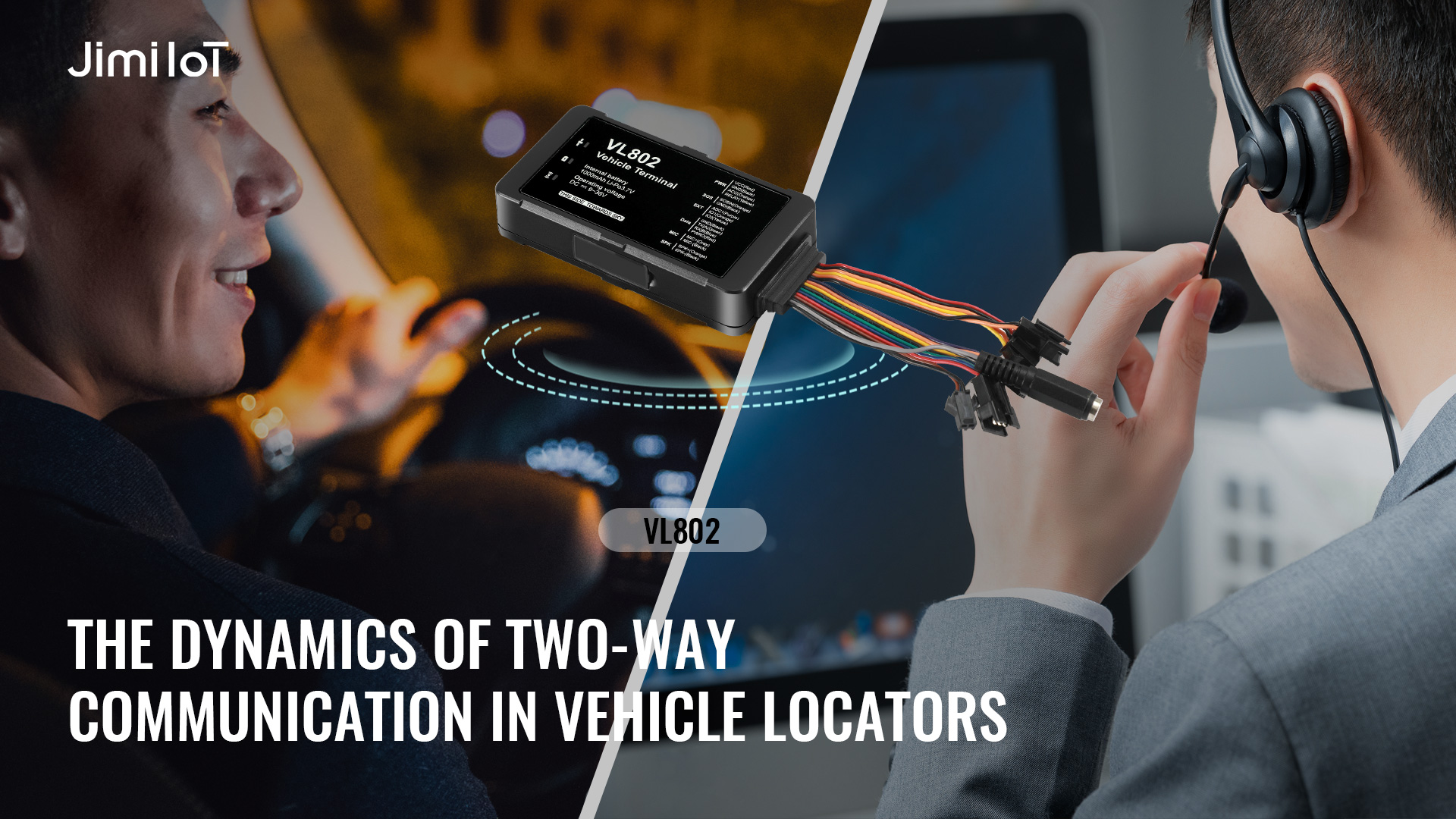Vehicle locators, initially focused on straightforward tracking, have quietly undergone a practical evolution. This evolution extends beyond the conventional, introducing a straightforward yet impactful feature: two-way communication.

Two-Way Communication
Two-way communication in vehicle locators refers to a dynamic interaction mechanism between the tracking device and the central monitoring system, enabling bidirectional data exchange. Unlike conventional tracking methods that merely receive and display information, this feature empowers the locator to both send and receive data.
The system acts as more than an observer, allowing for commands, requests, and acknowledgments to flow in both directions. This fundamental shift in communication transforms the role of the locator from a passive reporter to an active participant in the tracking process.
How it Goes Beyond Traditional Tracking Methods
Traditional tracking methods primarily involve the unidirectional transmission of data from the vehicle to the monitoring center. In contrast, two-way communication breaks this one-way street, fostering a dialogue between the vehicle and the system.
Significance in Vehicle Tracking Systems
Real-Time Interaction
Instant Communication Between the Central System and the Vehicle
The real-time interaction facilitated by two-way communication stands as a cornerstone in modern vehicle tracking systems. Unlike delayed or one-way communication, this feature ensures instant exchanges of information between the central system and the vehicle.
In practical terms, it means that commands, updates, and requests can be communicated promptly. For instance, if there’s a need to redirect a vehicle due to unforeseen circumstances or receive immediate diagnostics, two-way communication allows for instantaneous data transfer. This agility in communication is particularly critical in scenarios where timely decisions can impact efficiency, safety, or operational outcomes.
Optimizing Fleet Management
The applications of real-time interaction extend significantly to optimizing fleet management. Fleet managers can leverage this feature to maintain constant contact with vehicles, regardless of their location. Immediate communication enables dynamic route adjustments, response to changing circumstances, and proactive decision-making.
This capability contributes to more efficient fleet operations by minimizing downtime, improving route planning, and addressing issues promptly. Real-time interaction ensures that the fleet remains adaptable to varying conditions, ultimately enhancing the overall effectiveness of fleet management strategies.
Enhanced Security Features
Utilizing Two-Way Communication for Security Alerts
Two-way communication plays a pivotal role in enhancing security features within vehicle tracking systems. Unlike traditional one-way communication, this bidirectional interaction empowers the system to not only receive data from the vehicle but also send immediate commands or alerts in response.
In the context of security, two-way communication enables the system to transmit real-time security alerts to the central monitoring station. For instance, if there’s an unauthorized attempt to start the vehicle or if it deviates from the planned route, the system can instantly relay this information. This swift exchange of data ensures that security personnel or fleet managers can respond promptly to potential threats, mitigating risks associated with theft or unauthorized usage.
Proactive Measures Against Theft and Unauthorized Usage
The proactive nature of two-way communication is instrumental in implementing effective measures against theft and unauthorized vehicle usage. Security alerts triggered by deviations or suspicious activities enable immediate response actions.
For instance, if a vehicle is reported stolen, two-way communication allows the tracking system to not only convey this information to authorities but also take proactive measures such as remotely disabling the vehicle’s engine. This proactive approach significantly increases the likelihood of recovering stolen vehicles and acts as a deterrent against potential theft or unauthorized use.
VL802 4G GPS Tracker
Two-Way Communication
VL802 revolutionizes communication between the central system and the vehicle.
Enables instant and bidirectional data exchange for real-time responsiveness.
Enhanced Security Measures
Utilizes Two-Way Communication for immediate security alerts.
Proactive anti-theft measures, ensuring a swift response to unauthorized access.
4G Connectivity
Leverages high-speed 4G technology for seamless and rapid data transmission.
Ensures a stable and reliable connection for continuous tracking and monitoring.
Precise Location Tracking
Employs cutting-edge GPS technology for accurate real-time location tracking.
Ideal for optimizing fleet management, ensuring efficient route planning, and resource allocation.
Geofencing Capabilities
VL802 integrates dynamic geofencing, allowing users to define specific geographical boundaries.
Instant alerts are triggered if a vehicle enters or exits predefined zones, enhancing security and operational control.
WHY JIMI IOT?
JimiIoT is a global leader in innovative IoT solutions. We provide cutting-edge hardware and software tailored to enhance efficiency and connectivity. Our range of products includes advanced GPS tracking devices, asset management solutions, smart vehicle dashcams, and telematics platforms. With a focus on technological excellence and customer satisfaction, we empower businesses to optimize operations and gain valuable insights from data-driven analytics. Trust JimiIoT to drive positive change and unlock growth opportunities in the digital age.
If you would like more details, please visit Facebook, LinkedIn, INS, and Twitter pages to learn more.